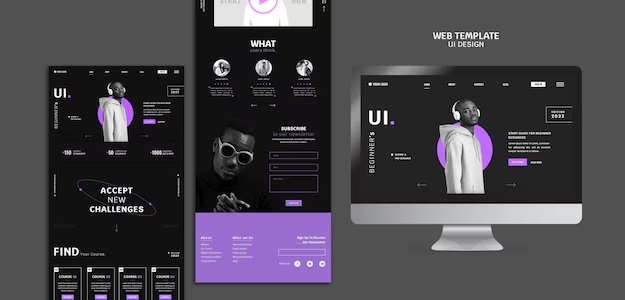
Your website acts as the digital face of your business, frequently influencing a client's initial impression. A poorly designed site can drive visitors away, hide essential information, and impede conversions. This blog delves into typical web design challenges and offers practical solutions to help your site attract, engage, and retain users effectively.
Just like fashion, web design trends change with time. A dated website can make your brand seem irrelevant and will not attract visitors. Incorporating modern layouts, appealing visuals, and user-friendly features enhances your brand's credibility and keeps visitors interested.
Quality content is the foundation of an efficient website. Stale, incorrect, or ill-composed content full of keyword stuffing or grammatical errors undermines trust and harms search engine rankings. Quality, engaging, and SEO-optimized content can really help to increase performance in leaps and bounds for your site.
Visitors expect ease in navigation. Complicated menus, lots of pop-ups, or disorganized links chase visitors away. Intuitive, straightforward navigation helps users find what they need fast and easily, and this would make their experience even better.
If users cannot find any critical information such as contact details or a description of services, they are not likely to take further action. Easy access to key details, such as clickable phone numbers or an easily accessible contact form, will increase user satisfaction.
Overwhelming or inconsistent design elements, such as hard-to-read fonts or jarring color schemes, can confuse users. Choosing clean, legible fonts and sticking to a cohesive color palette ensures readability and enhances the aesthetic of your site.
Patience is a rare commodity in the digital world. A website that takes too much time to load automatically loses prospective customers. This generally happens due to large image files, unnecessary scripting, or lack of optimization. Cleaning up your site design and optimizing media files can improve the loading speed of your website.
With the number of users accessing websites through smartphones and tablets increasing, responsiveness to mobile devices is an indispensable feature. A site not optimized for mobile would look distorted, which increases the rate of bounce. It means that ensuring your site functions well across devices improves accessibility and user satisfaction.
Exclusion from some kinds of Internet users, and therefore loss of potential audience, only deprive an individual web site from accommodating persons with physical disabilities. The lack of image alt text, poor color contrast, or keyboard-navigable site elements eventually contributes to that fact. The implementation of accessible guidelines, such as Web Content Guidelines (WCAG), thus lets everyone make a wider outreach.
Whereas visuals and videos can add flavor to a website, overloading the pages with heavy multi-media elements can boomerang. Too much animation, auto-playing videos, or oversized images weigh your site down and make it difficult for users to focus on the important stuff. Strike a balance by using multimedia purposefully, optimizing file sizes, to ensure a polished and effective presentation.

Web design isn’t a one-time task. Regularly updating your website to incorporate modern design elements and current trends keeps it fresh and appealing.
Web design isn’t a one-time task. Regularly updating your website to incorporate modern design elements and current trends keeps it fresh and appealing.
Run periodic analysis on the site's performance to locate weak points. Tools such as Google Analytics will help in ascertaining user behavior, identifying the most visited pages, and where visitors drop off.
Compress large media files, minimize unnecessary code, and use content delivery networks (CDNs) to better your site's speed.
your website can adapt well to different screen sizes and devices. Make sure to test the responsiveness so that your website works well across all platforms
Working with professional web designers ensures the functionality, attractiveness, and conformance of your site to the latest standards.
Your website is a major determinant in the online presence of your brand. These design issues, if fixed with functional solutions, will let one create a website that actually exceeds user expectations.
The foundation of any good digital strategy is to have a user-friendly, aesthetically pleasing, responsive site.